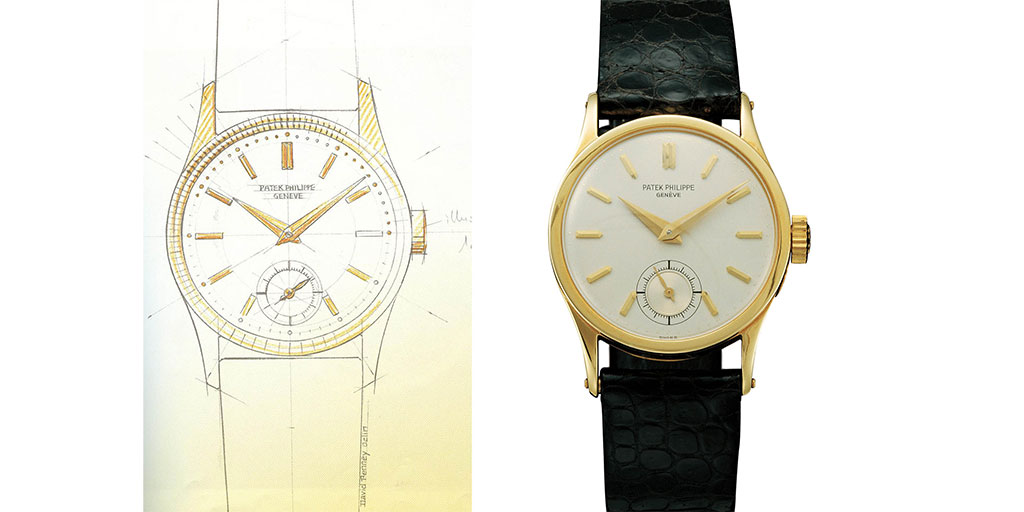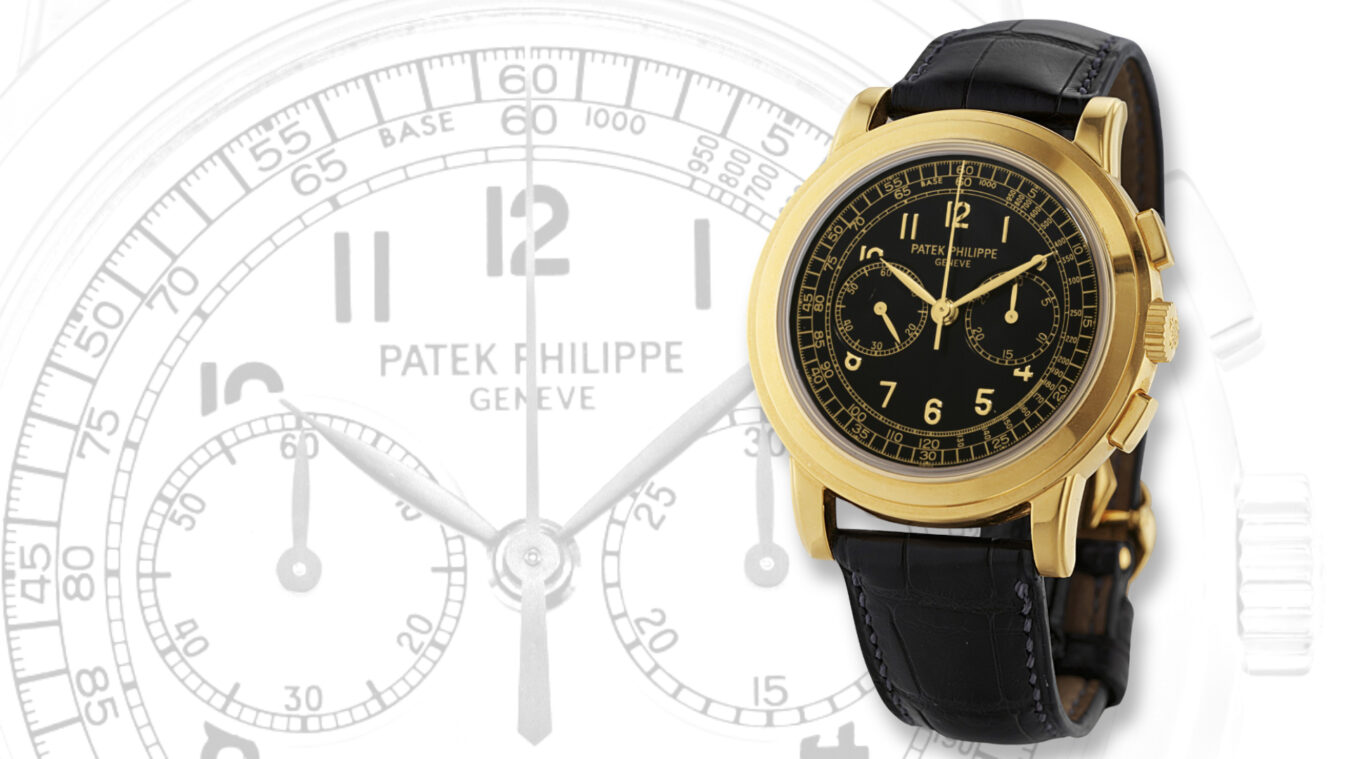There are endless “facts” that people believe as true and are endlessly parroted, copied, and retold until people simply accept them as fact. For example, can you see the Great Wall of China from space? (Actually, no); Do you need to let your kids wait an hour after eating before swimming? (Actually, no); Do toilets flush in different direction in the northern and southern hemispheres? (Actually, no); And my personal horological favorite, did David Penney design the Patek Philippe ref. 96? (Actually, no!).

This myth that David Penney designed the ref. 96 needs to be debunked immediately and forever deleted from the internet. Even Wikipedia, unfortunately the first stop of most ‘research’ articles in our modern world, states the ‘fact’ that Penney designed the ref. 96. But what does Wikipedia source? Who is David Penney? What is the real story?
The Myth:
Englishman and horologist David Penney designed the ref. 96 that was launched in the early 1930s and he helped save Patek Philippe from economic disaster in the Great Depression.
The Truth:
An Englishman did not save Patek Philippe from the perils of the Great Depression, especially as the gentleman in question was not yet born! David Penney is a very respected antiquarian horologist and illustrator, working for over five decades in the industry, David Penney is alive and well in the U.K. and you can find his site here.
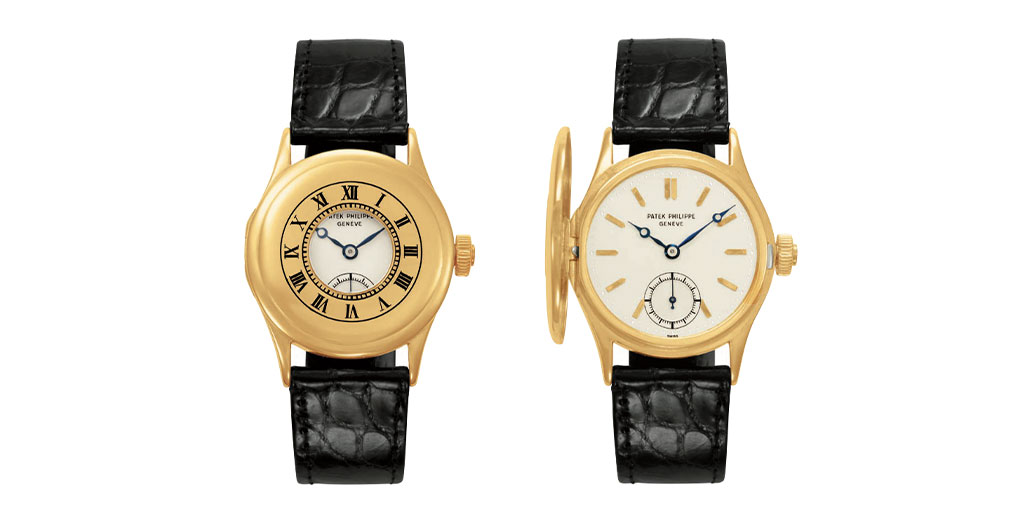
The Disconnect:
The problem online is that dozens of ‘sources’ on the internet make the bold claim that Penney designed the ref. 96. So what happened and how did this untruth become accepted as fact? When I was recently asked by a collector friend if David Penney designed the ref. 96 in the 1930s, I said, “absolutely no way is that possible” and my collector friend reacted as if I just made a statement akin to insisting the world was flat. So, to confirm my belief I reached out to David Penney directly to ask if he had ever heard of the rumor that he designed the ref. 96 and if he had any idea how the rumor was started. Within minutes, Mr. Penney kindly responded and set the record straight:
“You are welcome to try and debunk this myth. I have been contacted before about this and tell everyone the same story, which is: I am, or rather was, a full-time illustrator. I designed and provided the endpapers for Patek’s 1982 pocket watch book for the authors, Martin Huber and Alan Banbery. After its success, I was then asked by the authors to design the cover and provide the endpapers for their 1988 wristwatch book. During production, much of which was controlled by the late Christian Pfeiffer-Belli, I was asked to also create a series of ’non-technical’ images to celebrate some of Patek’s classic models. I was told they were to be used as chapter openers and would be used at quarter page size.”
So thanks to Mr. Penney we can start to see where the mistake was made. Someone, perhaps a journalist who glanced at the bible of all things Patek Philippe, the Huber & Banbery book, mistook Penney’s drawings as original concept drawings of the ref. 96.
David Penney continues confirming this major plot point:
“At some point, someone thought they were design drawings, and then their mistake was copied, and so on… They are not design drawings but were done solely to celebrate the original models, the designers of which I do not know.”
So, there you have it, Penney did not design the ref. 96 and the name of the original designer of the seminal time only reference is lost to history.
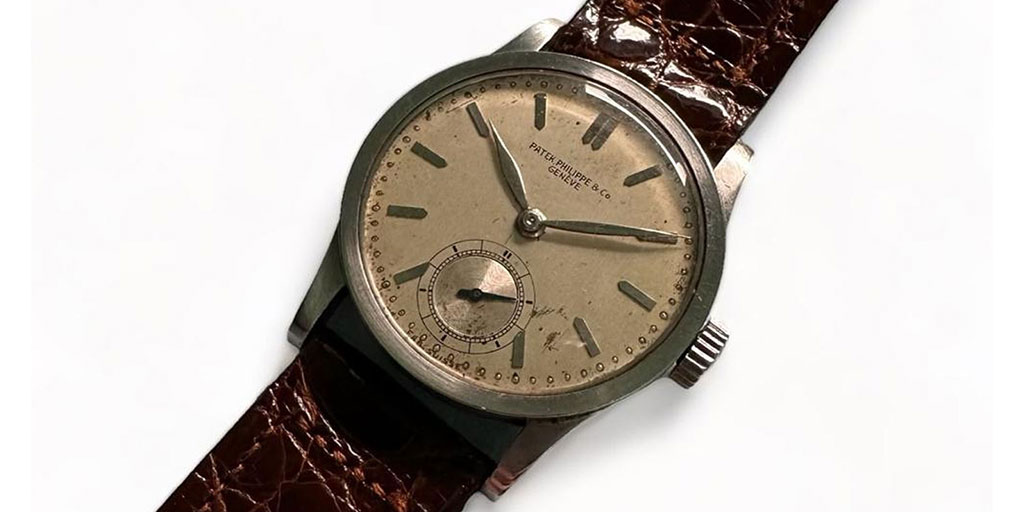
So how did this ‘fake news’ get spread around the internet and accepted as common factual knowledge? A google search will lead you to over 50 articles about Penney’s design and connection to Patek Philippe. All the mentions have the same basic ingredients: ‘English horologist. Designer. David Penney. Inspired by Bauhaus. Designed ref. 96.’ The part that shocked me most is the wide breadth of leading writers, many quite renowned, that fell into this trap of retelling this incorrect ‘fact’. We all make mistakes as writers and researchers, but this one is relatively easy to debunk and here at Collectability we are the first to correct mistakes when brought to our attention. So please see a small sampling below of some places that we found this incorrect ‘fact’ and I truly hope with your help that this untruth can be forever stricken from the internet! Future online researchers will thank you.
Ground Zero: Singapore
To the best of our knowledge, the earliest mention of this ‘fact’ is from October 11, 2017 by a writer Terence Lim from the Singapore Tatler. This quite possibly is ground zero of the David Penney myth and, to be fair, it is understandable how one could see the Penney drawings in the Huber & Banbery books and jump to this conclusion. Terence Lim wrote:
“Back then, due to various global situations—both political and economic—Patek, Philippe & Cie (as the company was formally known) wasn’t performing well until brothers Jean and Charles Henri Stern purchased a controlling stake in the company in 1932. (The Sterns were then the main dial supplier for Patek, Philippe & Cie.) They needed a solution to stabilise the company and that came in the Calatrava Ref 96. The first member of the Calatrava family, the Ref 96 was a simple wristwatch. Designed by English horologist David Penney, it followed the basic principles of Bauhaus design in that its aesthetics is stripped of all superfluous elements and unnecessary finishings. It was essentially distilled down to its pure essence and definitely in line with the philosophy of form following function.”

Going Viral
After this 2017 mention in Singapore Tatler, things begin to go somewhat viral on the internet with journalists and others retelling the myth as fact. Once it landed on a Wikipedia post on Patek Philippe in 2019, seemingly everyone and their second cousin repeated as fact online in auction descriptions, articles, and historical surveys of the history of the Calatrava.
According to Wikipedia:
“In 1932, Patek Philippe launched the first Calatrava model Ref. 96, which was designed by English horologist David Penney who was influenced by the Bauhaus art movement in Germany”.
So where did Wikipedia source this information?
First, Wikipedia cites a True Facet article dated dated October 12, 2018 by a well respected veteran watch writer. The main points from the Singapore Tatler article are kept:
“The very first Patek Philippe Calatrava watch was created in 1932, when pocket watches still abounded and wristwatches were just coming into the limelight. The creator of the first Calatrava watch, David Penney, was enamored with the Bauhaus style of industrial and interior design. The Bauhaus movement started in Germany in 1919 and emphasized holistic approach to design that brought together technology, aesthetics, and premier craftsmanship. Penney felt that simple, understated timepieces would be both elegant and timeless. As such, he designed the first Calatrava, Reference 96, in gold, with a clean ivory dial that featured applied gold markers and a tiny subsidiary seconds dial at 6:00.”
The second source that Wikipedia cites is Watchfinder, worded differently but with the same major points:
“Don’t get me wrong, though, Patek Philippe is a very traditional brand, especially post-quartz crisis when the balance flipped from the trusty mechanical timepiece to its battery-powered cousin, and perhaps a staple of that traditionalism is the Calatrava. Think of a watch, a simple yet classic watch, and guaranteed you’re thinking of the Calatrava. Designed by David Penney and debuted in 1932, it marked a turning point in the firm’s luck as, despite its reputation as an industry leader, it faced financial destruction in the wake of the Great Depression.”
Turns out Watchfinder was a bit a superspreader of this myth and mentions Penney’s design of the ref. 96 numerous times even giving the yet to be born Englishman credit for saving Patek Philippe from bankruptcy in the 1930s!
“The Stern brothers, who had every right to think this ailing company was in danger of going under, knew they had to act fast. So they commissioned David Penney, an English horologist, to save this illustrious company’s bacon – no pressure! – and come up with something remarkable.”
And the Rest
But it doesn’t stop there, here are some other prominent mentions! Soon the whole watch world was repeating this misinformation over the last four years repeatedly. This is a small sampling of places where we saw David Penney mentioned as the designer of the celebrated ref. 96.
https://www.fratellowatches.com/patek-philippe-calatrava-best-boring-watches/
https://escapementmagazine.com/articles/patek-philippe-calatrava-5226g/
https://bulangandsons.com/blogs/magazine/the-patek-philippe-calatrava-s-early-years
https://thewatchlounge.com/patek-philippe-calatrava-ref-5196-review-with-price/
https://www.watch-wiki.net/doku.php?id=patek_philippe_calatrava_96
https://www.monacolegendauctions.com/auction/exclusive-timepieces-jewels-14/lot-180
https://www.ewbankauctions.co.uk/News-Blog/patek-philippe-and-the-bauhaus-connection#
https://montrespubliques.com/1minute-reads/the-watch-behind-the-cross
https://www.chrono24.in/magazine/what-are-bauhaus-watches-p_41673/
https://robbreport.com.my/2020/09/01/patek-philippe-calatrava-game-changer-horological-icon/
https://www.watchonista.com/articles/opinions/what-makes-watch-bauhaus
https://www.mayors.com/Pre+Owned-Patek-Philippe-Calatrava-AS05642/p/40930068
https://forums.timezone.com/index.php?t=tree&goto=7696200&rid=0
https://www.gearpatrol.com/watches/a489295/patek-philippe-calatrava-interview/
https://loupiosity.com/2022/05/the-oak-collection-patek-philippe-chapters/
https://twaintime.com/products/patek-philippe-calatrava-18k-rose-gold-ref-2525r-circa-1954
https://www.acollectedman.com/products/patek-philippe-calatrava-5000g-white-gold
https://www.bobswatches.com/rolex-blog/buying-guides/wanted-patek-philippe-watches.html
https://escapementmagazine.com/articles/patek-philippe-calatrava-6119/
From Patek Philippe authorized retailers to leading auction houses, leading print and online publications, and even some of the most renowned watch writers of our day, this myth has been spread to the point that people simply accept it as fact. David Penney may not have saved Patek Philippe from going out of business and certainly did not design the ref. 96, however, the importance of his work in all things horological over five decades of contributing to the horological and scientific community should be noted. David Penney worked in publishing before becoming a full time illustrator specializing in horology and other aspects from the history of technology. His clients included Patek Philippe, George Daniels, Omega, and The British Museum, among many other important institutions and brands. See his impressive bio here.
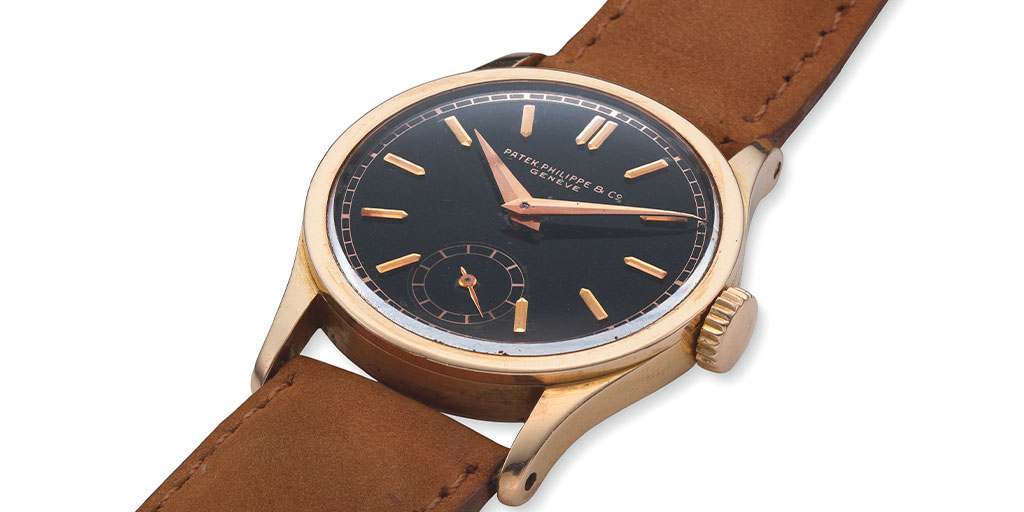
When I asked Mr. Penney about his time illustrating for Patek Philippe, he shared a memorable story that underlines the brilliance of his work as an illustrator and horologist:
“One ‘ funny’ story I can tell you is that when I delivered the endpaper drawings showing the action of the perpetual calendar and chronograph actions, the head of Patek’s workshop was called and immediately took them away for checking. Some time later he returned and told Alan Banbery they were correct. He looked rather crestfallen at the time, however. I asked Alan Banbery (English born) why this was, only to be later told that Patek’s workshop could not believe a “mere illustrator,” and indeed one who was not Swiss, could have got the mechanism correct! They tried hard to find fault, but could not…”
An essential part of Collectability’s quest to share scholarship on all things Patek Philippe is to provide accurate information. If we see inaccurate information repeatedly published, we will do our best to find the source and offer a correction. We hope this story about one aspect taken as ‘fact’ by the watch community offers insight into how information is spread and shared. It is a cautionary tale of being careful of what you see online and not accepting everything you read as facts.
If you have any other ideas or other untruths shared within the world of Patek Philippe, please let us know as we would love to investigate further. And if you ever read anything on Collectability or our various platforms that is open for discussion or debate please let us know. Not a day goes by that we don’t learn something new about Patek Philippe and we are always on the hunt to learn more about our beloved brand.
Special thanks to David Penney for his assistance in researching this article. Please visit David Penney here.

